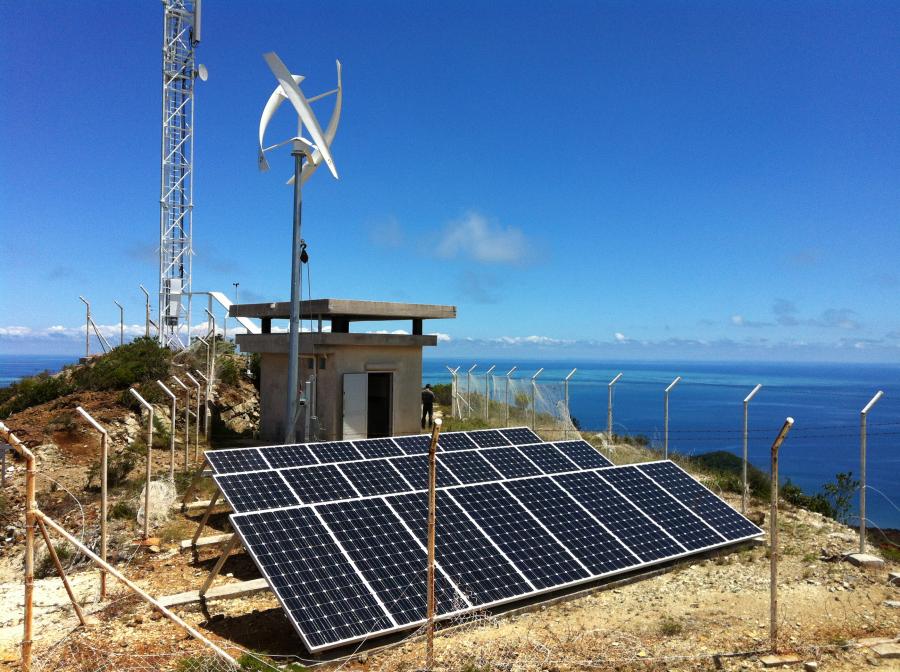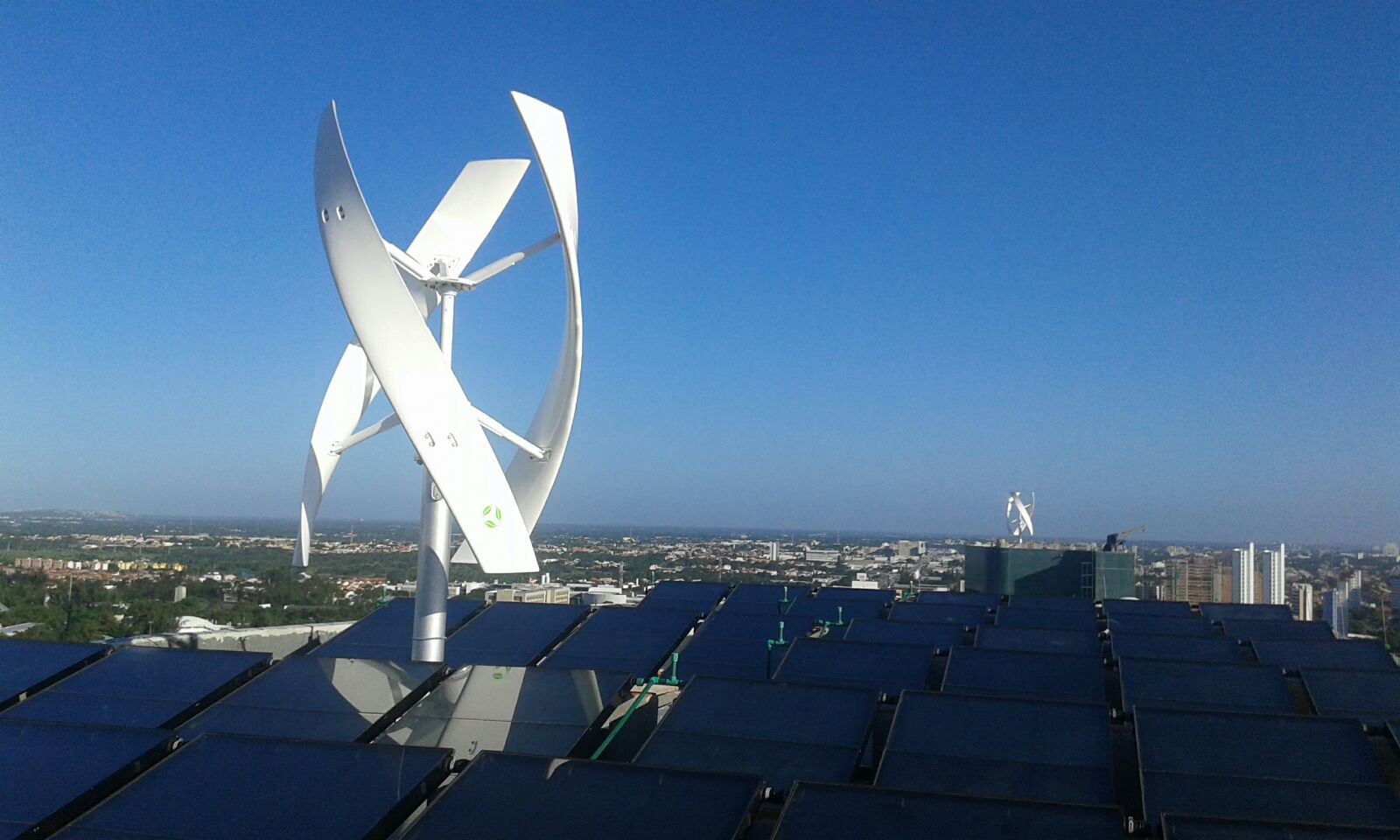Wind + Solar
The benefits of using a hybrid system
 Despite a crash in the prices of conventional fuels, global investment in renewable energy hit a record high last year. According to a report from Bloomberg New Energy Finance, nearly $329 billion was invested in clean energy technologies in 2015. Of that investment, $67.4 billion went to small-scale and rooftop projects, proving that an increasing number of customers are using distributed generation (DG) as a way to meet their energy needs.
Despite a crash in the prices of conventional fuels, global investment in renewable energy hit a record high last year. According to a report from Bloomberg New Energy Finance, nearly $329 billion was invested in clean energy technologies in 2015. Of that investment, $67.4 billion went to small-scale and rooftop projects, proving that an increasing number of customers are using distributed generation (DG) as a way to meet their energy needs.
With the declining cost for both solar and wind technologies driving much of this change, prospective buyers are left to consider which system will perform best, solar or wind?
In a number of cases, however, a “hybrid” energy system combining both solar and wind can offer significant advantages over a system comprised of only a single technology. In deploying hybrid systems, consumers can overcome the intermittency challenges associated with renewables to ensure a more secure, and consistent power supply at their location.
Wind vs. solar
A natural, inverse relationship exists between the sun and wind. When the sun is shining, the wind is often not blowing, and vice versa. The most obvious difference occurs in the daily cycle: it’s sunny during the day, while it tends to be windier during the evening. Depending on the location, solar and wind will peak in their power production at different times during a 24 hour cycle. However, this negative correlation also exists between seasons. In the winter, when shorter days reduce the production of solar PV panels, the production offered by a wind turbine can help keep a more reliable power supply. In short, the long days of summer are ideal for relying on production from a PV array, while the higher wind velocities during winter allow users to benefit from generation from a co-located wind turbine.
The role of energy storage
For greater reliability, many developers are also incorporating advanced energy storage into hybrid systems. These “microgrid” solutions are ideal for clients who are looking to enhance their energy reliability beyond what’s available from the grid, or for clients who live in areas where the grid is simply not available. Adding storage increases the security of the renewable energy system because energy that is not used immediately can be stored for later use.
Currently, the majority of microgrids in North America are installed at universities, hospitals, military bases, and other areas requiring energy security for critical loads in the event of an outage. However, microgrids can be useful to a variety of customers, including:
- Remote telecommunications sites: These sites are one the largest markets cost savings through distributed microgrids. As the mobile and smartphone markets continue their robust growth, the demand for secure power for these sites is also increasing. Often located in remote, hard-to-access regions and relying almost exclusively on imported diesel fuel for energy, telecommunications towers make ideal candidates for the autonomous, clean, and reliable energy of distributed microgrids.
- Commercial buildings: For organizations requiring a constant and secure energy flow, hybrid microgrids reduce the costs associated with business interruption in the event of extreme weather or a utility grid outage. This is especially true for facilities like IT data centers, grocery stores, or manufacturing facilities. Using a combination of energy production and storage options, individual buildings can operate as their own power suppliers without a need for non-renewable generation.
- Remote Island Communities: Similar to telecoms, many remote island communities rely on imported diesel and other fossil fuels. The inherent volatility in the price of this fuel can be make managing energy costs difficult. With hybrid microgrids, energy managers in these communities can lower cost their costs while increasing their independence.
 What was once a niche market focused on off-grid or backup power supply has become one that provides benefits to an increasing number of customers. By incorporating generation from two sources, customers able to consistently consume the energy they use closer to where it is produced. With the maturity of storage technologies, their applications for use is increasing, and greater deployment of grid tied and off-grid hybrid wind and solar systems can be expected in the future.
What was once a niche market focused on off-grid or backup power supply has become one that provides benefits to an increasing number of customers. By incorporating generation from two sources, customers able to consistently consume the energy they use closer to where it is produced. With the maturity of storage technologies, their applications for use is increasing, and greater deployment of grid tied and off-grid hybrid wind and solar systems can be expected in the future.
Arjun Gupta is an NABCEP Certified PV Installation Professional and senior system design engineer at UGE International.
UGE, Inc. | www.ugei.com
Volume: 2016 May/June









